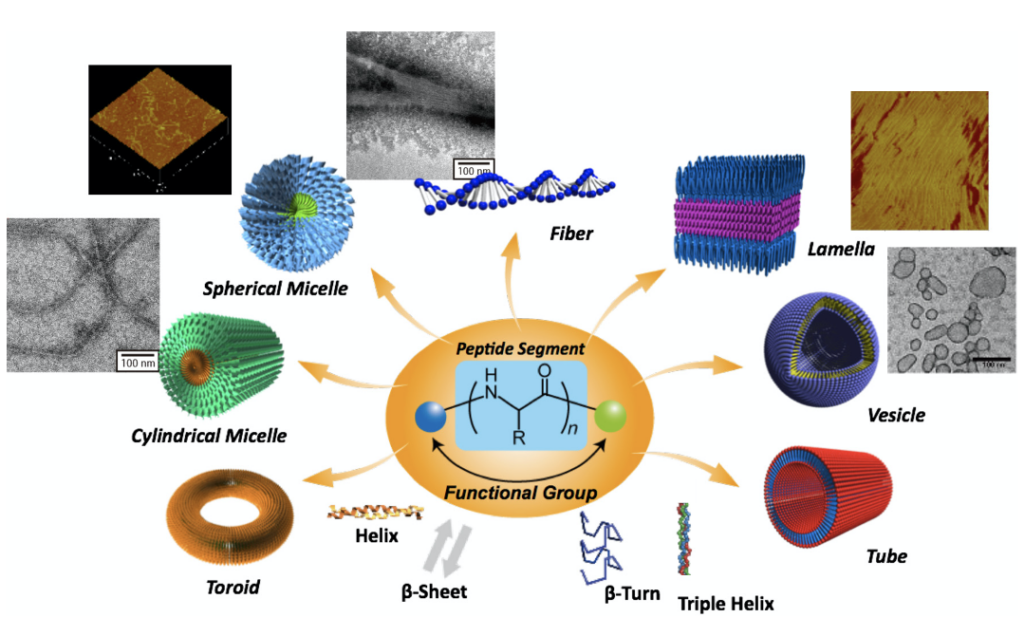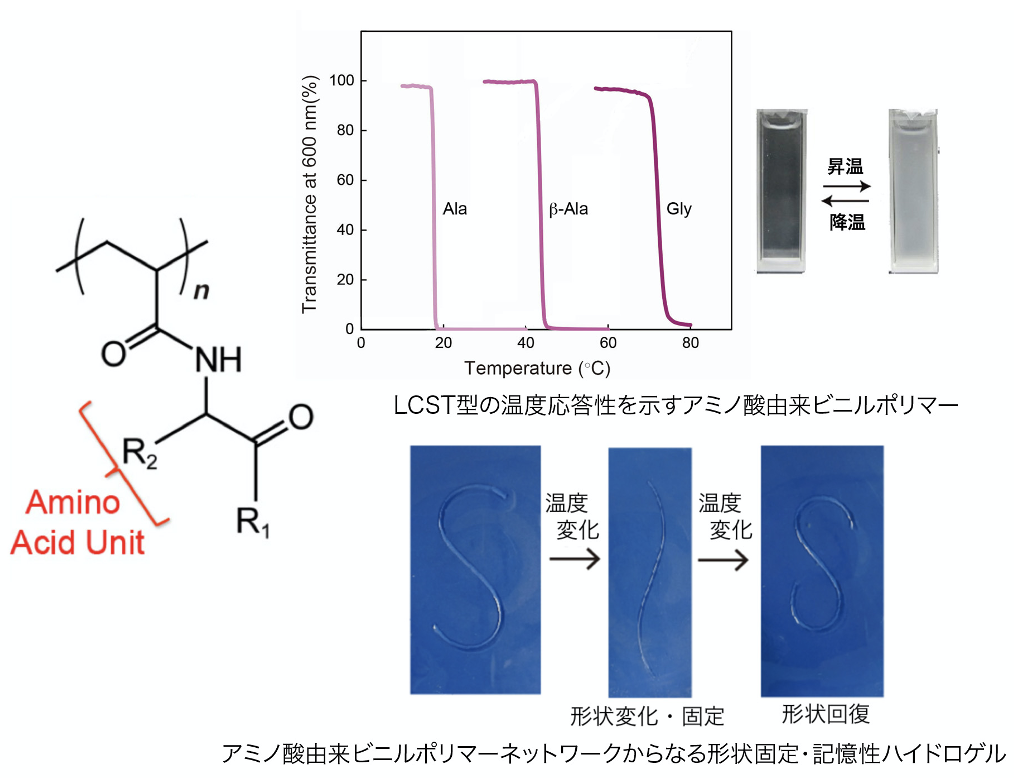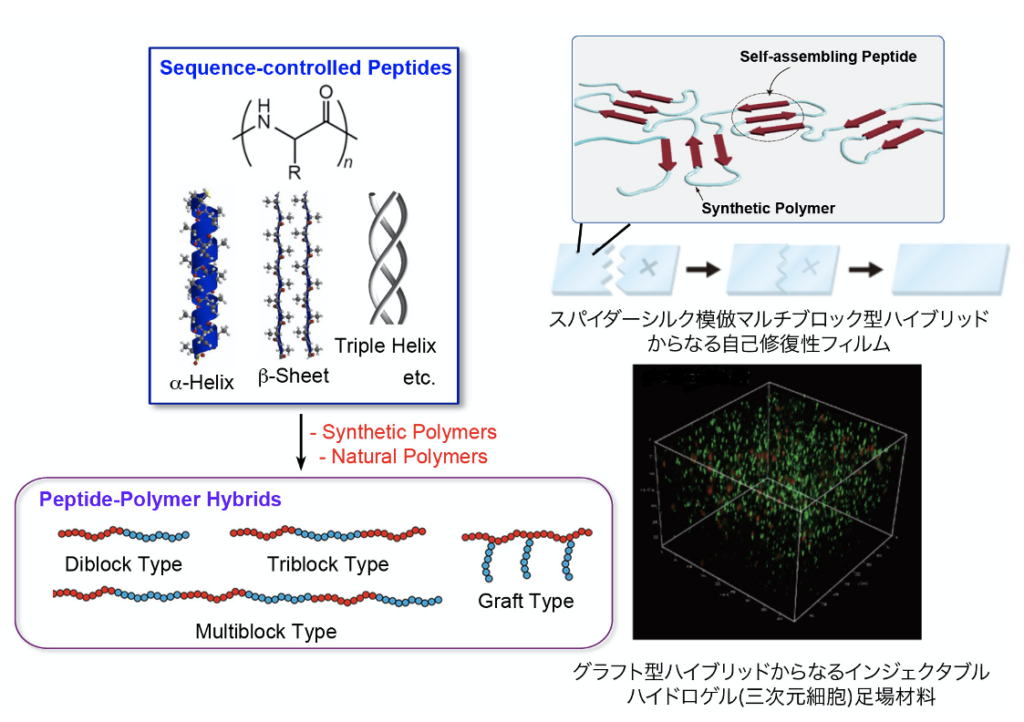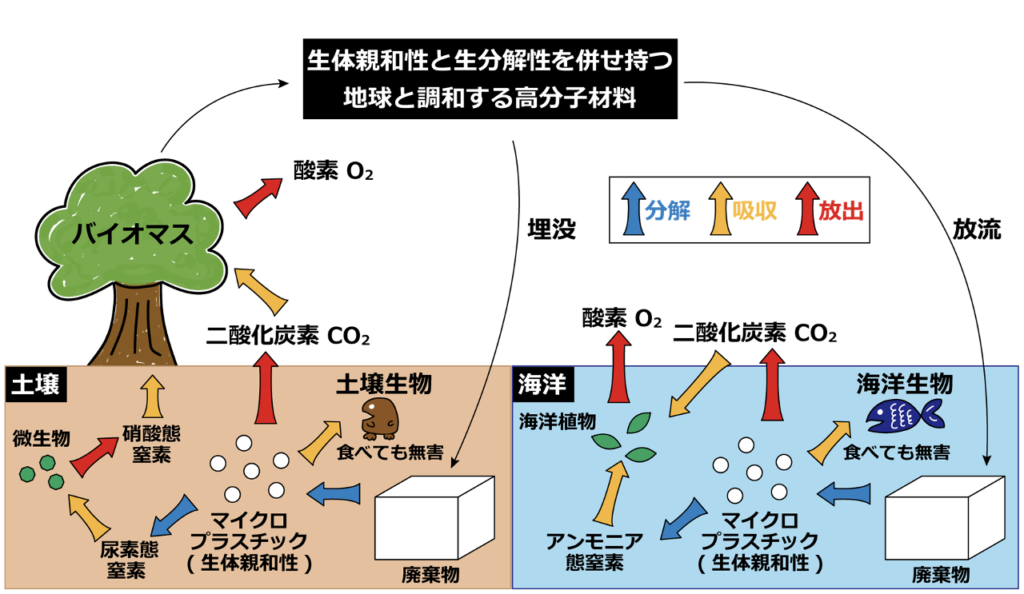<Overview>
The main purpose of our research group is to develop novel functional polymer soft materials with well-regulated nanostructures. For this purpose, the living biopolymer system such as proteins, which includes exquisite molecular structures and versatile biofunctions, would be a good model. Applying the structural and functional principles of biopolymers to a synthetic macromolecular system is of importance, especially for designing novel smart materials. To achieve these objects, we newly design and synthesize biocompatible and environmentally friendly smart polymers including self-assembling peptides and peptide-polymer hybrids and characterize their properties comprehensively.
Development of Functional Nanomaterials via Peptide Self-assembly
De novo-designed artificial oligopeptides are particularly fascinating components for constructing 3D nanoarchitectures via self-assembly. We design and synthesize novel artificial peptides with various secondary structural motifs, such as α-helices, β-sheets, and triple helices, and elucidate their self-assembling behavior, including conformation-morphology correlation. Developing a novel self-assembling unit is challenging and valuable for the design of new functional nanomaterials with potential applications in biomedical field, such as nano-scaffolds for tissue engineering and nanocarriers for drug delivery.

Smart Soft Materials from Amino Acid-derived Synthetic Polymers
Naturally occurring amino acids (20 kinds) are functional monomers of proteins and have been well known to demonstrate various properties based on the structures of side chain. We are focusing on amino acid-derived vinyl polymers and conducting their precise synthesis. These bio-based polymers are fascinating smart polymers with excellent water solubility, biocompatibility, and easily tunable thermo-responsiveness achieved by varying the type of amino acids and their combination. These new classes of thermo-responsive vinyl polymers are valuable for biomedical and nanotechnological applications.

Design of Novel Functional Polymer Materials based on Peptide-Polymer Hybrid Strategy
A hybridization of sequence-controlled oligopeptides and conventional synthetic polymers is a good strategy for designing functional polymeric materials. This chemical approach enables the precise control of both structural and functional properties by manipulating the element type (e.g., peptides and synthetic polymers) and architectures (e.g., diblock, multiblock, graft, and star-types). We are developing novel functional soft materials, such as self-healable materials, stimuli-responsive materials, and 2D/3D-cell scaffolds, based on such peptide-polymer hybrid strategy.

Design of Environment-Friendly Synthetic Polymers with Both Biocompatibility and Biodegradability
Although plastic materials are essentially for our life, the materials hardly decomposed under the natural environment. Recently, it is major problem in the world that microplastics (MPs) generated by deterioration of plastics pollute and destroys the environment. To protect our planet Earth,“biodegradability” is required for next-generation materials at least. However, no matter how good biodegradability of plastic is excellent, MPs state cannot be avoided. We are developing novel environment-friendly polymers with not only “biodegradability” but also “biocompatibility” on the premise that the MPs enter the living bodies. In addition, we are also proceeding establishment of sustainable molecular design and synthetic route utilizing biomass.

